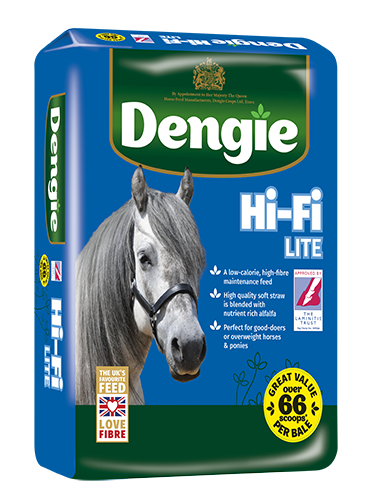Can I Turn My Laminitis Prone Horse Out To Grass
Can I turn my laminitis prone horse or pony out to grass?
Grazing seems like the most natural thing we can allow our horses and ponies to do – after all they have evolved to graze and browse in their natural environment. However, grazing can be the final trigger for the painful and debilitating disease laminitis which is why grass intake needs to be carefully monitored and managed especially for those most at risk.
If your horse or pony has had laminitis and been off grass completely, before reintroducing turn out time on pasture you should consider the following: –
- Is your horse a healthy bodyweight? – overweight horses and ponies are at greatest risk of laminitis
- Is your horse showing any clinical signs of laminitis? – if the problem hasn’t completely resolved then seek further veterinary help and keep the horse off grass
- Has your horse or pony had previous multiple episodes of laminitis triggered by grazing, even though they are a healthy weight?
- Does your horse have normal insulin sensitivity? – this is determined by testing levels of hormones such as insulin which needs to be done in conjunction with your vet.
Quite simply, only those horses and ponies that aren’t showing any signs of laminitis currently, are not overweight and that don’t have an underlying metabolic problem such as Equine Metabolic Syndrome (EMS) or PPID, are the lowest risk but if they are naturally good doers and therefore likely to gain weight easily, the amount of grass they have access to is still likely to need to be restricted.

What’s the problem with grass?
The problem with grass is that it is an abundant source of sugar and energy and it is hard to know how much your horse or pony is consuming. For many leisure horses and ponies, grazing on even average pasture can provide way more energy than they require resulting in weight gain and obesity which predisposes them to laminitis. Then, consuming a lot of sugar from the pasture on a particular day, means a tipping point is reached that results in laminitis.
The sugar in grass can be in the form of simple sugars but also storage sugars such as fructan. The total of the two combined in referred to as WSC (water soluble carbohydrates). Levels of WSC in grazing vary according to grass species and environmental conditions, and so are very difficult to predict.
Laminitis Grazing Management
 If you are able to turn out your horse or pony it is vital that you keep them at a healthy bodyweight. Laminitis grazing management can help you to do this. If you are concerned about their weight or their risk of laminitis, then you should also try to avoid grazing them at times when environmental conditions indicate that WSC levels could be elevated or when there is lots of grass available that will inevitably increase their intake.
If you are able to turn out your horse or pony it is vital that you keep them at a healthy bodyweight. Laminitis grazing management can help you to do this. If you are concerned about their weight or their risk of laminitis, then you should also try to avoid grazing them at times when environmental conditions indicate that WSC levels could be elevated or when there is lots of grass available that will inevitably increase their intake.
Methods to restrict grass access to help manage bodyweight include the use of a grazing muzzle and strip grazing. Grazing muzzles must be introduced with care to ensure it fits properly, that the horse knows it can eat and drink with the muzzle on and that the horse isn’t being bullied by others in the field. The National Equine Welfare Council gives some advice regarding grazing muzzle use for laminitis grazing management:
So, when is the best time to graze a laminitis prone horse?
The question of ‘when’s the best time to graze a laminitis prone horse?’ is a tricky one to answer as in practice water soluble carbohydrate levels are very difficult to predict. Generally the following advice is given regarding turnout:-
- Turn out early morning, removing from pasture by mid-morning. This is because overnight grass plants use stores of WSC as there is no light available to use for photosynthesis – the process that produces sugar in plants. The levels of sugar decline overnight but start to increase again through the day with higher light levels.
- Try to graze paddocks that are sown with grasses that are naturally lower in sugar such as Timothy. Some grass types such as ryegrass are much higher in sugar and are commonly found in former dairy pasture. However, even grasses that are typically low can accumulate high levels of WSC given the right environmental conditions and so it is important not to just assume your horse will be safe.
- Avoid grazing conditions where there is lots of light, but it is cold such as bright, frosty winter mornings. Grass is unable to grow below 5C, but if it is bright it will still be photosynthesising and so producing sugar which will accumulate.
- Drought and overgrazing can both result in higher levels of WSC in the pasture as the grass is unable to grow and use its energy stores.
- Ideally pastures should be regularly cut or grazed to maintain them in the actively growing stage as this uses WSC.
- The use of a grazing muzzle can help to limit WSC intake as the horse isn’t able to consume as much grass and gets a small amount of grass per bite.
For friendly feeding advice contact the Dengie Feedline on 01621 841188 or complete our Feed Advice form.



